
🌟It is very important to know! Fishing hook is the basis of fishing tackle, it’s where you should start to shape your fishing equipment. This small item is the key to successful fishing. The shape and design of the hook determines the number of trophies in the fishing bucket.
Hook, Line, and Sinker: Your Ultimate Guide to Choosing the Perfect Fishing Hook
Reeling in Success: The Art of Hook Selection
🐟Importance of selecting the correct fishing hook:
Fishing can be an enjoyable and relaxing activity, providing an opportunity to connect with nature while pursuing a beloved hobby. However, one essential aspect that contributes to a successful and satisfying fishing experience is selecting the correct fishing hook. The right hook not only increases your chances of catching fish but also ensures the proper handling of the fish and reduces the likelihood of losing them during the fight. In essence, choosing the appropriate hook can make the difference between a frustrating day and a fulfilling one spent on the water.
Hooked on Basics: Factors That Make or Break Your Fishing Experience
🐟Overview of factors that influence hook choice:
Selecting the perfect fishing hook involves various factors that must be taken into consideration. These factors include understanding hook sizes and terminology, evaluating the different hook types available, choosing the appropriate material, matching the hook to the target species, and selecting hooks based on the fishing technique and bait used.
In the following sections, we will delve deeper into each of these factors to provide you with a comprehensive understanding of how to choose the right fishing hook the first time. Armed with this knowledge, you will be better equipped to make informed decisions that can significantly impact your overall fishing success.
Hook Sizes and Terminology Demystified
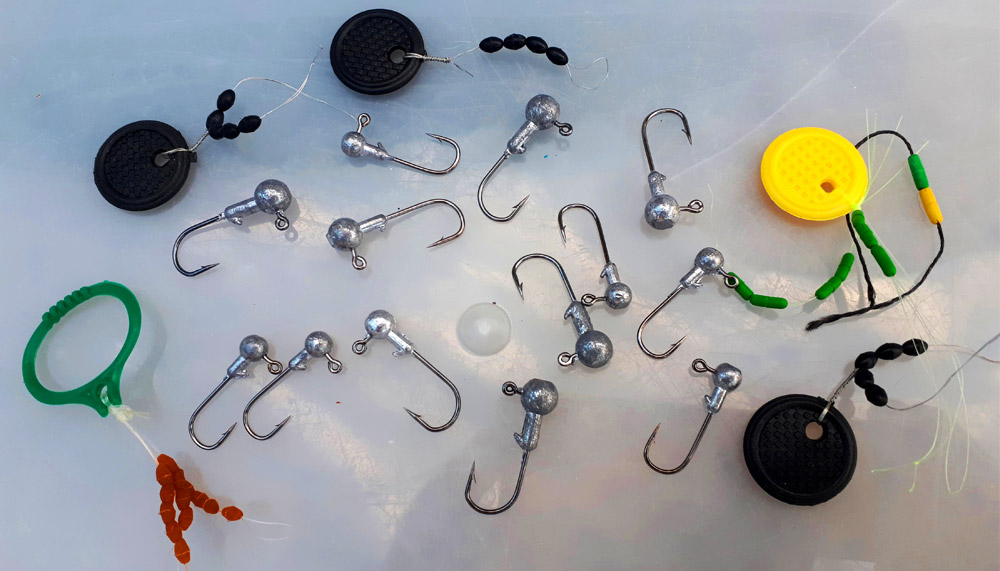
Decoding Hook Sizes: Bigger Isn’t Always Better
🐬Explanation of hook size numbering system:
- Smaller numbers for larger hooks. The hook size numbering system can be confusing at first but is essential to grasp it when selecting the appropriate hook. Hook sizes start at a very small size (e.g., size 32) and increase in size as the numbers decrease. For instance, a size 10 hook is larger than a size 20 hook. It’s crucial to note that hook sizes are not standardized across manufacturers, so sizes may vary slightly between different brands.
- “Aught” sizes for larger hooks. Once hook sizes reach size 1, they transition to a different numbering system called “aught” sizes. This system starts at 1/0 (pronounced “one-aught”) and progresses to larger sizes such as 2/0, 3/0, and so on. In the aught system, larger numbers indicate larger hooks. For example, a 4/0 hook is larger than a 2/0 hook.
Anatomy of a Hook: Know Your Fishing Hook Inside Out
🐬Parts of a fishing hook:
| Fishing Hook Component | Explanation |
|---|---|
| Eye | The eye of a fishing hook is the small, round, or oval-shaped opening at the top of the hook where the fishing line is attached. There are various types of hook eyes, including ringed, tapered, and needle eyes, each with specific benefits and applications. |
| Shank | The shank is the straight part of the hook that extends from the eye to the bend. It can be short, long, or curved, depending on the hook style and intended use. The length of the shank influences the hook’s holding power and can affect the action of certain lures. |
| Bend | The bend of a fishing hook is the curved section that connects the shank to the point. The shape and angle of the bend play a significant role in the hook’s effectiveness for setting and holding onto fish. |
| Point | The point is the sharp, penetrating end of the hook that pierces the fish’s mouth. Points can be shaped in various ways, such as needle, knife-edge, or spear points, each with different characteristics that influence hook penetration and holding power. |
| Barb | The barb is a small protrusion located near the point of the hook that helps to prevent the hook from backing out of the fish’s mouth once set. Some hooks have a single barb, while others may have multiple barbs or no barb at all. Barbless hooks are often used in catch-and-release fishing situations to minimize injury to the fish. |
A Sea of Choices: Exploring Different Fishing Hook Types
J-hooks: The Classic Fish Catcher
J-hooks are the most common type of fishing hooks and get their name from their J-like shape. They are versatile and can be used with various fishing techniques and bait types, including live bait, cut bait, and artificial lures.
Benefits of J-hooks include their versatility and wide range of available sizes, which makes them suitable for targeting various fish species. However, the drawbacks of J-hooks are the increased risk of gut-hooking fish, which can lead to higher mortality rates in catch-and-release fishing. Additionally, they may require more forceful hooksets, potentially leading to lost fish.
Circle Hooks: Environmentally Friendly and Highly Effective
Circle hooks feature a curved shape with the hook point facing inward toward the shank. This unique design promotes a more secure hook-up in the corner of the fish’s mouth, reducing the likelihood of gut-hooking.
Benefits of circle hooks include their ability to reduce gut-hooking and facilitate easier hook removal, which is ideal for catch-and-release fishing. They also require less force during hooksets, reducing the chances of losing fish. However, circle hooks may not be as versatile as J-hooks, and their effectiveness can be diminished when using certain types of baits or lures.
Treble Hooks: Triple the Trouble for Your Catch
Treble hooks consist of three individual hooks that share a single eye. They are commonly used with artificial lures such as crankbaits, jerkbaits, and topwater plugs to increase hook-up rates.
Treble hooks offer improved hook-up rates due to their multiple points, increasing the chances of catching fish. However, they can cause more damage to fish, making them less suitable for catch-and-release fishing. They are also more likely to snag on underwater structures, resulting in lost lures and increased risk of line breakage.
Specialty Hooks: Unique Solutions for Challenging Fishing Scenarios
| Fishing Hook Variation | Explanation |
|---|---|
| Weedless hooks | Weedless hooks feature a guard or wire that protects the hook point from snagging on vegetation or other underwater structures. These hooks are ideal for fishing in areas with the heavy cover or when using soft plastic lures. |
| Double hooks | Double hooks consist of two hooks that share a single eye, with each hook facing in the opposite direction. They are often used in large lures or trolling rigs for increased hook-up rates and holding power. |
| Wacky hooks | Wacky hooks are specifically designed for wacky rigging soft plastic worms. These hooks usually have a wide gap and a sharp bend to ensure a secure hook-up while reducing the chances of the bait tearing or slipping off. |
| Other variations | There are many other specialized hook variations, such as octopus hooks, siwash hooks, and drop shot hooks, each designed to cater to specific fishing techniques or situations. Understanding the unique features and applications of these hooks can help you optimize your fishing experience. |
Material Matters: Choosing the Best Hook for Your Needs
Stainless Steel Hooks: The Timeless Classic
The benefits of stainless steel hooks include their corrosion resistance and durability, making them suitable for use in saltwater environments where rust can be a significant issue. Additionally, stainless steel hooks are strong and maintain their sharpness for a longer period. However, drawbacks include their higher cost compared to other hook materials and the potential for being less sharp than high-carbon steel hooks out of the box.
High-Carbon Steel Hooks: The Modern Edge
High-carbon steel hooks offer the advantage of being extremely sharp, allowing for easier penetration and hooksets. They are generally more affordable than stainless steel hooks and offer good strength for their weight. However, high-carbon steel hooks are more susceptible to corrosion and may require additional care and maintenance to prevent rust, especially in saltwater environments. Their sharpness may also decrease more rapidly than stainless steel hooks.
Coated Hooks: A Splash of Color and Functionality
Coated hooks have a protective layer applied to the hook’s surface, usually in the form of a chemical or electroplating process. The coating can provide additional corrosion resistance, which is particularly helpful for high-carbon steel hooks used in saltwater environments. Coatings can also add color to the hooks, which can be beneficial in certain fishing situations by either camouflaging the hook or adding visual appeal to the bait or lure. Drawbacks of coated hooks include potential chipping or wearing of the coating over time, which can decrease the hook’s effectiveness and require more frequent replacement. Additionally, coated hooks may be slightly more expensive than uncoated hooks due to the added manufacturing process.
Target Locked: Picking the Right Hook for Your Fish Species
One Size Doesn’t Fit All: Matching Hook to Fish
When selecting a fishing hook, it’s essential to consider the size and type of fish you’re targeting. A general guideline is to use smaller hooks for smaller fish and larger hooks for larger fish. Also, pay attention to the fish’s mouth structure and feeding habits to choose the appropriate hook design. For instance, some fish have small, delicate mouths that require smaller hooks, while others have stronger jaws that can handle larger hooks.
Reel in the Big Ones: Hook Recommendations for Popular Fish Species
| Fish Species | Hook Type | Hook Size Range | Explanation |
|---|---|---|---|
| Bass | J-hooks (wide gap or EWG) | 1/0 to 5/0 | Strong, versatile hooks commonly used for bass fishing with artificial lures. Wide gap or EWG hooks are preferred due to their improved hooksets. Hook size varies depending on the size of the bait or lure and the size of the bass being targeted. |
| Trout | Single, barbless hooks | 10 to 18 | Smaller hooks are appropriate for most trout species due to their smaller mouths and preference for smaller, more natural-looking baits. Single, barbless hooks are often recommended for catch-and-release fishing to minimize harm to the fish. |
| Catfish | Circle hooks | 2/0 to 8/0 | Catfish are opportunistic feeders with strong jaws and can handle larger hooks. Circle hooks are a popular choice for catfish as they reduce the risk of gut-hooking the fish. Hook size varies depending on the size of the catfish and the bait being used. |
| Panfish | Thin wire hooks or Aberdeen hooks | 6 to 12 | Panfish, such as bluegills, crappies, and sunfish, have small mouths and require smaller hooks. Thin wire hooks or Aberdeen hooks are recommended when using live bait to reduce injury to the bait and make it more appealing to panfish. |
| Salmon | J-hooks or circle hooks | 2/0 to 6/0 | Salmon fishing typically involves larger hooks due to the fish’s strong fighting ability. J-hooks or circle hooks can be used with sizes ranging from 2/0 to 6/0. For fly fishing, salmon-specific fly hooks in sizes 2 to 10 are commonly used. |
The Perfect Match: Pairing Hooks with Techniques and Bait
Live Bait Hooks: Maximizing Your Catch Potential
🔵Appropriate hook types and sizes:
When using live bait, it’s crucial to select the appropriate hook type and size to ensure a natural presentation and effective hooksets. Circle hooks and J-hooks are popular choices for live bait fishing, as they provide secure hooksets without injuring the bait. The hook size should match the size of the bait being used, with smaller hooks for smaller baitfish, insects, or worms, and larger hooks for bigger baitfish or crustaceans.
🔵Hook placement for live bait:
Proper hook placement is essential for keeping live bait active and enticing to fish. For baitfish, hooking through the lips, dorsal fin, or just behind the head is effective, as it allows the bait to swim naturally. When using worms, insects, or crustaceans, hook them through the thickest part of their body, taking care not to damage vital organs that would shorten their lifespan on the hook.
Artificial Lures: Hooking Your Way to Success
🔵Appropriate hook types and sizes:
When using artificial lures, the hook type and size should complement the lure’s design and action. J-hooks, including wide gap or extra wide gap hooks, are often used with soft plastic baits to maximize hook exposure and improve hooksets. Treble hooks are commonly found on hard-bodied lures like crankbaits, jerkbaits, and topwater lures, providing multiple points for hooking fish. The hook size should be proportionate to the lure size to ensure a balanced appearance and optimal performance.
🔵Hook attachment for different lure types:
Different lures require different hook attachments. For soft plastics, like worms or creature baits, a Texas rig, Carolina rig, or wacky rig can be used to secure the hook. For hard-bodied lures, split rings or direct attachment to the lure’s eyelet are common. When attaching hooks to lures, ensure they can move freely and do not interfere with the lure’s action or presentation.
Fly Fishing Hooks: Light as a Feather, Catchy as a Pro
🔵Appropriate hook types and sizes:
Fly fishing hooks come in a wide variety of styles and sizes, designed to match the specific fly patterns and target species. Dry fly hooks, nymph hooks, streamer hooks, and salmon/steelhead hooks are some common types used in fly fishing. Hook sizes for flies typically range from 2 to 28, with smaller numbers for larger hooks. The hook size should be appropriate for the size of the fly and the target fish species.
🔵Hook selection for different fly patterns:
Selecting the right hook for a particular fly pattern is crucial for creating a lifelike appearance and ensuring effective hooksets. Dry fly hooks should be lightweight with fine wire and a straight eye to help the fly float on the water’s surface. Nymph hooks typically have a down eye, 2X or 3X long shank, and heavier wire to sink the fly. Streamer hooks are often longer and heavier with a straight or down eye to accommodate larger, more substantial flies. Salmon and steelhead hooks are designed with the specific needs of these fish in mind, offering larger sizes and stronger construction.
Hook Selection Tips to Boost Your Fishing Game
Local Wisdom: Tap into the Experts for Winning Hook Choices
One of the best ways to choose the right fishing hook is by consulting local experts or fellow anglers. They can provide valuable insights on the target fish species in the area, their preferred baits, and the most effective hook types and sizes. Fishing shops, online forums, or fishing clubs are excellent resources for gathering such information. Don’t hesitate to ask questions and learn from the experiences of others, as they can help guide your hook selection process and improve your chances of success.
The Art of Experimentation: Trying Out Hooks for the Perfect Fit
Another essential tip for ensuring successful hook selection is to experiment with different hook types and sizes. While general guidelines can be helpful, each angler has their own preferences and fishing techniques. Trying out a variety of hooks can help you determine which ones work best for your specific needs and the target species. Keep an open mind and be willing to try new hook styles or sizes, as this can lead to discovering new and effective fishing methods.
Learn, Adapt, and Conquer: Evolving Your Hook Selection Strategy
As with any aspect of fishing, observation, and adaptation are crucial for success. Pay attention to how different hook types and sizes perform in various conditions and with different baits or lures. Take note of your hooksets, missed fish, or lost fish, and adjust your hook selection accordingly. Remember that even the most experienced anglers continually learn and adapt their techniques based on their observations and results. By being observant and willing to adjust your hook selection, you’ll increase your chances of a successful fishing experience.
How to Choose a Fishing Hook – Basic Tips
We have already discussed with you how to attach your line to a float or rod. In this article, we will talk about hooks. How to attach them, which hook to choose for a beginner, what types of hooks there are, how they differ, etc. After reading this article, you will be sure which hook you need for your fish.
The most basic rule to remember when choosing a hook is that there is no universal hook for every fish. Everything will depend on the fish you are going to catch, your tackle, fishing equipment, and water.
Let’s take a simple example. When you need to catch a 5-pound bass in a muddy lake with long, thick rubber worms, you will need a larger hook than when fishing for smallmouth trout. Hook size is very dependent on fish size and musk, pike, bass, and other large fish require much larger hooks than trout, panfish, and zander.
In addition, the reel, rod, and line also affect the size of the hook. To plunge a hook into the mouth of a 20-pound catfish, you need a powerful reel and rod. In this case, it will be difficult to fish with a small hook. The fish can easily straighten the small hook or jump off of it when fighting.
Now you know that the choice of a hook depends on many factors. But that doesn’t mean you can’t simplify the hook selection process.
What Is A Fishing Hook?

A hook is a metal fishing accessory, which is one of the elements of equipment for various types of tackle, which carries the bait “on itself”, makes a catch of the prey, holds the catch, and delivers it to the hands of the angler.
What Sizes Of Hooks Are There?
Generally, hook sizes are confusing for every novice angler. The thing is that there is no size standard here, by which all manufacturers would be equal. It is standard in this industry that the size of a particular model increases as the number attributed to it decreases. That is, a size 2 hook will be larger than a size 4 hook.
In addition, the hooks get bigger as soon as / 0 appears to the right of the number. That is, a 2/0 hook is larger than just 2. But at the same time, a 4/0 hook is larger than 3/0, 2/0, and 1/0. This is a rather strange system that just needs to be remembered. You can take a look at the photo below to see how it works.
Choosing the Right Hook Size

Beginners usually start with a set of pre-packaged fishhooks made up of many types and sizes of fishhooks. You can also add a hook remover to your fishing tackle box to help with difficult fishing hooks. Use our Species Browser to find out what species of fish are common around you and how big they can be, so you can choose the right size for fishing hooks.
The most important characteristic of a fishhook is its size. If the hook is too large, smaller fish will not be able to catch it in their mouth. You can feel it hitting, but chances are, the hook will end up just stripped of its bait. If the hook is too small, large fish can swallow it completely. Deep hooks are more traumatic for the fish and make it difficult to handle a successful catch and release. Therefore, knowing which fishing hooks to choose from your fishing hook set is vital to your success.
As your fishing experience increases, you will make your choice of fishing hooks. Choosing fishing hooks can be as simple or as difficult as you want, but one thing is for sure: this is usually a pleasant part of fishing, especially for those targeting a specific fish that they haven’t managed to catch yet.
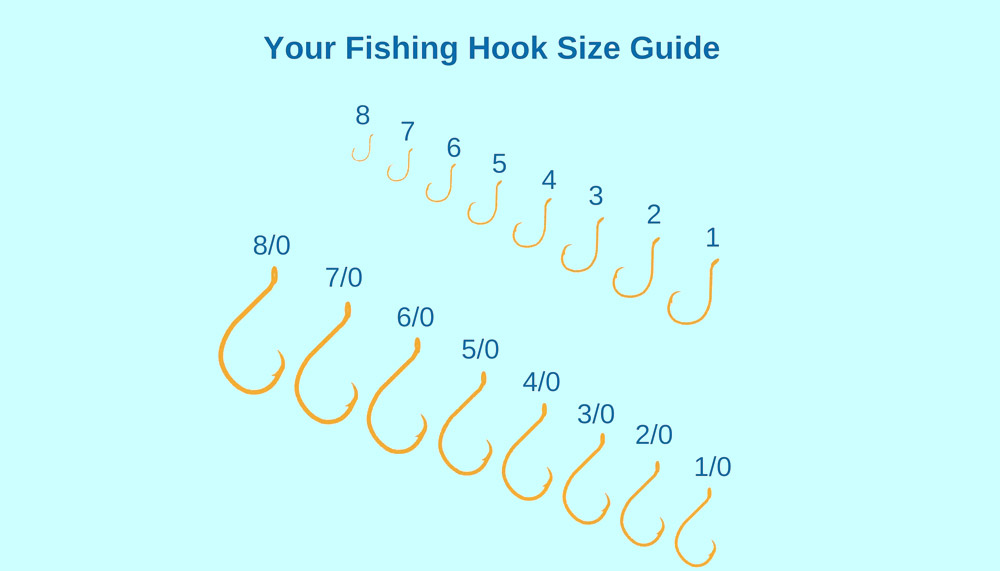
What Type Are Fishing Hooks?
As with sizes, fishhooks come in a variety of shapes. Each form is more or less effective depending on the fish and the type of fishing. Now we will talk about the basic shapes of hooks and what they are for.
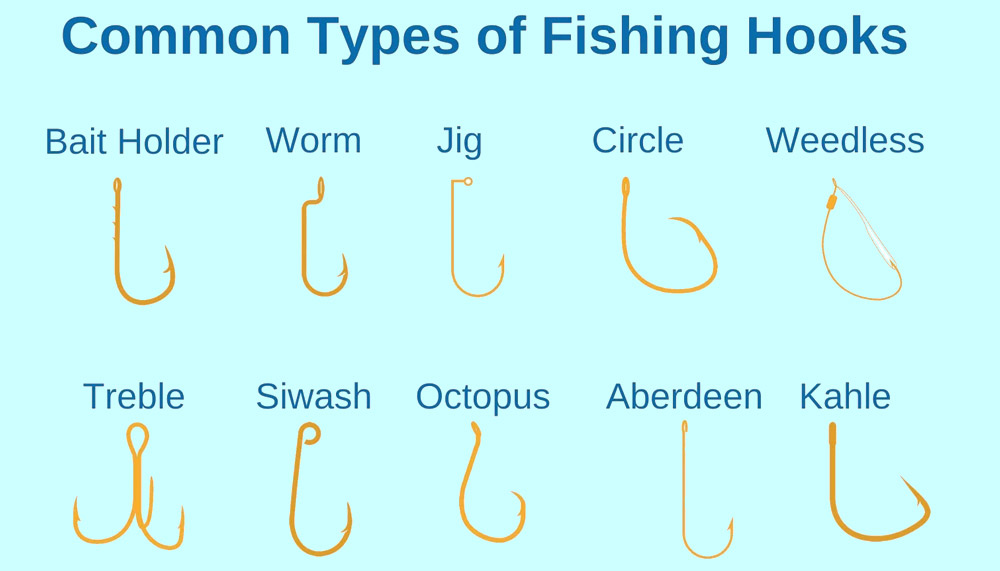
🧿J-Hooks. The most popular hook shape is J-Hooks. They resemble the letter J and hold the fish well thanks to their notches. You simply set the hook and the fish clings to the barbs by itself. These hooks usually have a long, straight stem with 2-3 barbs. They are available in many sizes and thicknesses and are suitable for many species of fish from bluegill to large catfish. This is why this design is ideal for many anglers.
🧿Circle Hooks. This type of hook was very popular with Japanese anglers a couple of years ago. Its advantage is its ease of use. Thanks to the round shape, the angler does not need to set a hook or hit. The fish itself clings to it as soon as it turns around when biting the bait. In addition, this hook will almost always stick into the corner of the fish’s mouth, making it easier for you to remove the fish.
🧿Offset Shank Hooks. This design can be used in both round hooks and J-Hooks. Their main difference is that they have a tail curved or offset relative to the whole body. The purpose of these hooks is to rotate in the fish’s mouth to make it easier to serrate. But some models are also used with soft plastic baits. It is much more convenient than with other hooks.
🧿Weedless Hooks. As the name suggests, the main purpose of these hooks is to avoid algae when immersed in water. They have a wire guard at the end of the hook and are designed for catching pike, musk, and other fish that like to dwell in weeds. These hooks can be used with live and dead soft plastic baits.
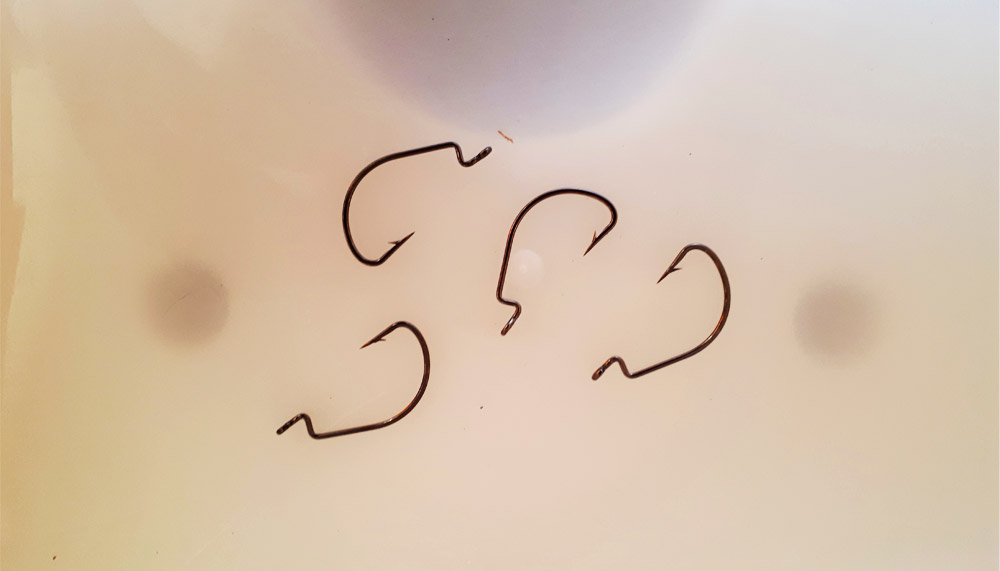
🧿Worm Hooks. If you love fishing with live or rubber worms, then you will probably love these hooks. They have a curve near the eye that holds the worm’s head in place. The tip pierces the body so that the fish can grab onto the hook, and the rest hangs freely in the water so that the worm moves naturally.

🧿Jig Hooks. This type of hook has an incredibly simple yet effective construction. The eyelet is located 90 degrees to the shank. This gives the bait more mobility than other hooks. Besides, you can easily modify this hook for catching and releasing by sawing off the barbs at the end.
🧿Treble Hooks. Treble hooks attach to most split ring lures. If you have special pliers for these rings, you can easily replace the hook, as many anglers do. Some fishermen are replacing treble hooks with larger, stronger ones, believing that this will be a more reliable solution for larger fish and tackle. Some also replace all treble hooks with single hooks or keep only the rear treble hooks, believing that single hooks or fewer treble hooks make it easier to catch and release the fish. Night fishermen also remove treble hooks to avoid injury when handling fish when working without light.
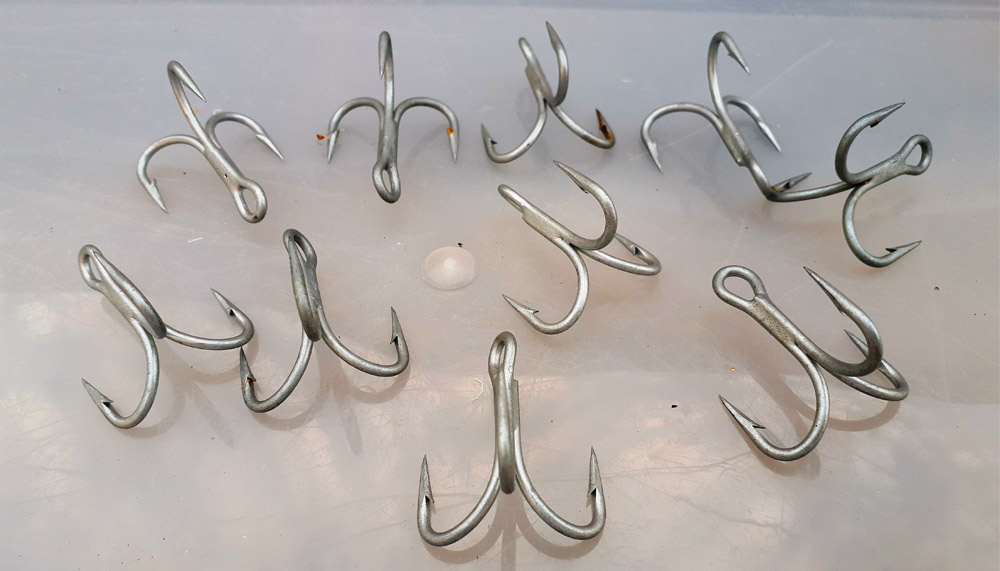
🧿Double Hooks. You will most often find double hooks on frog lures, but anglers also often use them on spoons, spinnerbaits, or even live lures. Double hooks are mainly for bass, pike, and weed-dwelling musks. Therefore, these hooks are made from strong and thick wire.
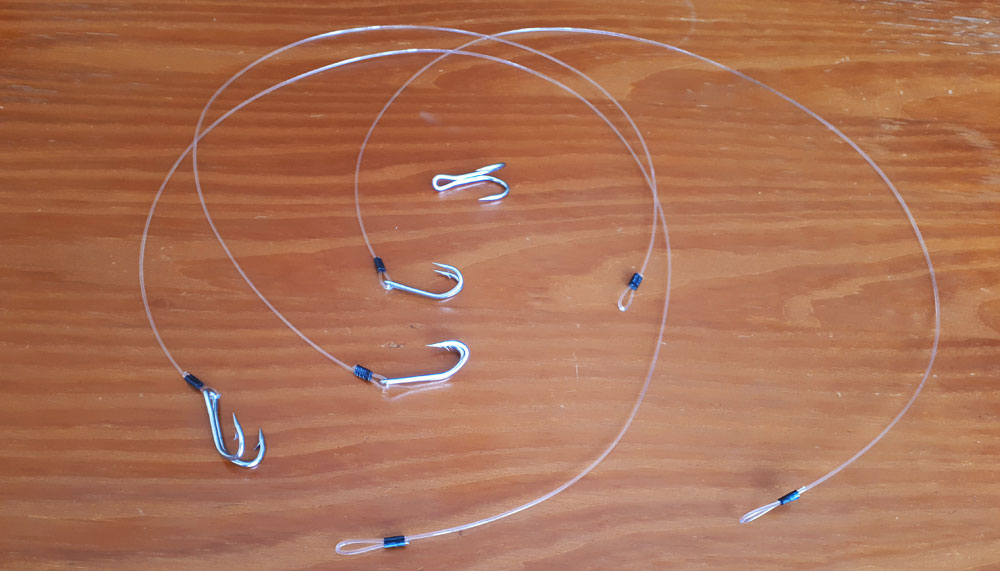
🧿Siwash Hooks. This type of hook is often used by anglers to replace treble and double hooks on their spoons and spinnerbaits. They are easier to remove and less dangerous for fish, and this is their advantage. Therefore, they have an open eyelet for easier attachment.
🧿Octopus Hooks. Octopus hooks serve one purpose – it is easy to use with small baits. Their short, rounded shank reduces the size and weight of the hook while still being suitable for big fish.
Other Types Of Hooks
Above, we have listed only the most basic and popular types of hooks. Of course, there are dozens of other types of hooks. The main thing is to choose the one that best suits your goals and needs.
Choosing the Right Hook Type and Thickness
Okay, we understand that the size of the hook depends on the size of the fish you are hunting. Based on this, you can choose the optimal size, which will be large enough to hold the fish and not bend, but at the same time small enough for the fish to bite through it. Now let’s talk about the shape and thickness of the hook.
Important! We recommend the J-shaped lure hook, which remains the most popular of the beginner fishing hooks. These hooks are increasingly being added to the selection of fishing hooks for young anglers.
If we think about what the fishhook should do, then we can simplify the selection process.
The first thing we need is a sharp hook because the first thing the hook has to do is get into the mouth of the fish.
Secondly, the hook must be strong to maintain its shape under pressure. So, start looking for a sharp hook strong enough to match your fishing goal at that particular time.
Thinner fishing hooks are usually sharper and great for setting the hook, but they are more likely to bend under pressure. On the other hand, thicker hooks are suitable for fish with stiff jaws and great strength. These hooks usually require a few strokes (quick pulls on the line) for the hook to be set well enough.
The value before the X on the package is responsible for the thickness of the wire from which the hook is made. That is, a 4/0 4X hook is made of a stronger and heavier wire than the same 4/0 hook but with a 3X or 2X rating.
Choosing a Bait Hook
It is quite easy to pick up hooks for the bait, but you need to carefully calculate some factors. For large baits, the hooks should be heavy and heavy with thick wire. And vice versa, for small bait, it is better to choose small hooks made of thin wire, you do not need to go further than 2-3 sizes. Whenever you are going to use large baits for large fish, you need to make sure that your hook is thick and long enough to accommodate the entire bait. This will also allow the tip of the hook to effectively grip the fish.
Choosing a Lure Hook
The choice of hooks for bait fishing is the same as for bait fishing. But in most cases, here the hooks (most often treble) are already attached to the bait itself, bought in the store. The manufacturer chooses treble hooks by himself depending on the size of the bait, so they are well balanced and the bait works correctly. In addition, the manufacturer’s treble hooks are made of quality materials, which ensures good fishing.
Parts of a Fishing Hook

There are several types of hooks for freshwater and saltwater fishing: bait, circle, treble, and many special hooks, they all share the same basic anatomy.
🔷The Point: The tip of a fish hook is the sharp end that goes into the fish’s mouth.
🔷The Barb: A barb is a protrusion that extends backward from a point that prevents the fish from detaching.
🔷The Eye: The eye is where you attach the hook to the line or bait.
🔷The Bend: The bend in the bend of the hook.
🔷The Shank: The shank is the connection between the bend and the eyelet.
🔷The Gap: The gap is the distance between the tip of the hook and the shank.
Types of Hook Point
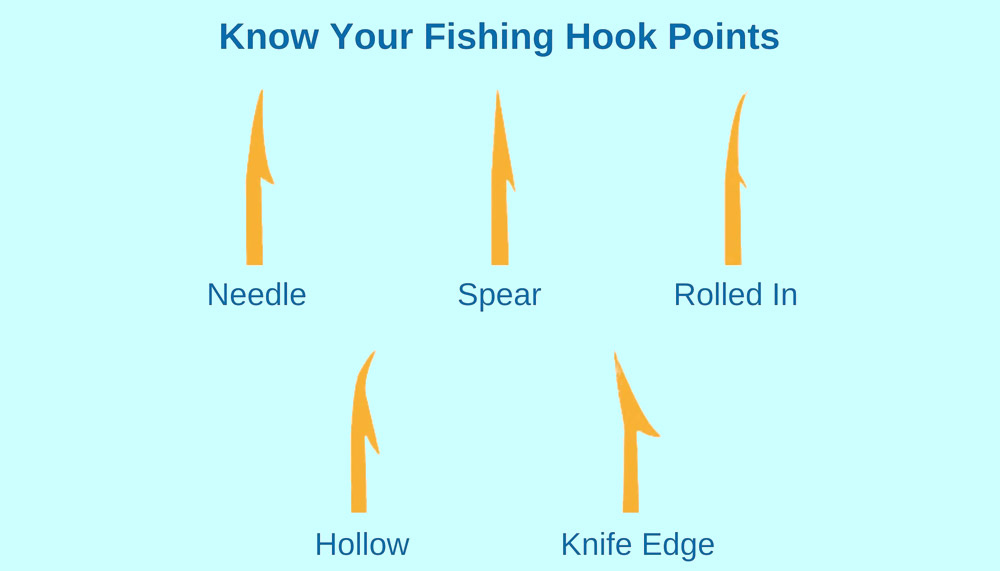
This is the main part of your setup. This is the difference between reliable communication and a near miss. Therefore, it should come as no surprise that various hooks have been developed over the years. Here are five of the most common tips.
💎Needlepoint. The tip of the needle tapers slightly towards the shank. They are designed in such a way that they are easy to penetrate and do minimal damage after passing. This will keep the hole small, making it harder for the fish to get rid of the hook.
💎Spearpoint. This is the most common and versatile point. The spear points run straight from the throat, providing decent penetration and limited damage to fish. They are also easier to sharpen than other tip types.
💎Rolled up point. The rolled tip pierces the fish deeply with minimal pressure. The tip is directed towards the eye of the hook, keeping the force in line with the path of movement through the mouth of the fish. They are ideal for boat fishing.
💎Hollowpoint. Hollow-tipped hooks have a curved spike that curves down towards the notch. They cut through fish with a soft mouth and stay in place when they get there. However, they can make the hook installation much more difficult for tougher rocks.
💎Knife Edge. Tapered on both sides and directed away from the shank, they are designed for maximum penetration. The problem with the edge of a knife is that they do a lot of damage to the fish.
Types of Hook Eye

Moving on to the blunt end, choosing the right eye can be just as important to your catch. There are special eyes for certain knots and tying styles. Some eyes are also enhanced to cope with larger fish.
The most common is a simple eye with a ring. It is easy to thread and works with a wide variety of knots. For larger fish, anglers usually use a soldered loop – a loop sealed with molten metal. Soldering the hook prevents it from bending or breaking during the scrum. Finally, needle hooks are ideal for bait fishing. You can easily thread the entire hook through the bait like a sewing needle.
There is also a pair of eyes that can only be used for certain fishing techniques. Dry fly anglers prefer a tapered eye that gets thinner towards the end of the loop. This reduces weight by helping the fly swim properly. On the other hand, the looped eye gives wet flies a bit more weight. It also allows fishermen to be more creative with designs.
Choosing Fish Hooks For Fish Under 3 kg
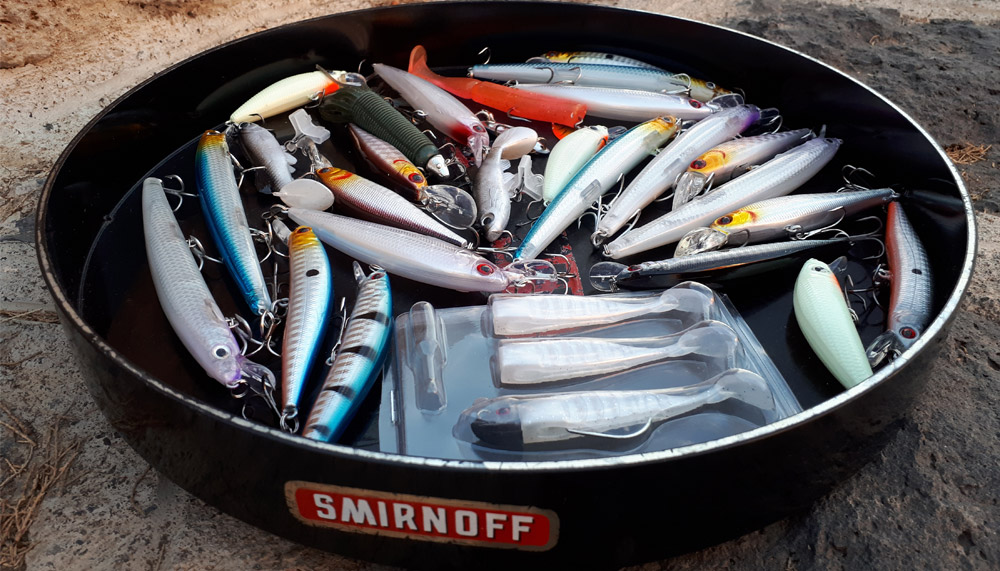
The best hook for fish up to 3 kg is the one that works for the bait being used. A small hook can catch a big fish, but a big hook will make it much more difficult to catch anything. This is why it is always beneficial to use the smallest hook that will still be practical for the bait of your choice – which should fit the fish and the size of its mouth.
The smaller hook makes it easier to find the right weight for the bait and gives the bait a better look. Choosing the best hook gets a little tricky when you are aiming for fish weighing over 3kg because extra pressure comes into play. Also, choosing the right treble hooks for lures is a little more difficult than choosing single hooks. But you need to have one sharp hook. You can check the sharpness with a thumbnail. Slide the hook over the nail carefully. If it grabs, the hook is sharp enough to continue to use. If that’s not the case, it’s time to get another hook.
➰My recommendations! Choose in a fishing store hooks of good quality and reliable manufacturer – Mustad Fishing Hook. This brand will not let you down.
Fishing Hooks FAQs
Here we have collected answers to the most popular questions that we received from you regarding the choice and use of fishing hooks.
Remember, choosing the right fishing hook involves understanding the target species, fishing conditions, and your preferred bait or lure. It’s always a good idea to carry a variety of hook sizes and types to adapt to different situations.
More Than Just a Twist of Metal
Ultimately, selecting the right fishing hook involves a combination of research, personal preference, and experience. Experimenting with different hook sizes, types, and materials will help you find the perfect hook for your specific fishing needs.
The Perfect Hook: A Recap on Key Factors
In conclusion, selecting the right fishing hook is a crucial aspect of successful angling. To make an informed choice, consider factors such as hook size and terminology, the type of fishing hook (J-hooks, circle hooks, treble hooks, or specialty hooks), hook material (stainless steel, high-carbon steel, or coated hooks), and matching the hook to the target species and fishing technique. By understanding and taking into account these factors, you’ll be better equipped to choose the most appropriate hook for your specific needs.
Hooked on Success: A Well-Chosen Hook Equals an Unforgettable Fishing Experience
Fishing is an enjoyable and rewarding hobby, but success often depends on the details, such as selecting the right hook. Investing time and effort into understanding and choosing the right hook for your target fish species, bait, and technique can significantly improve your overall fishing experience. Consult with local experts, experiment with different hook types and sizes, and observe and adjust based on your results. Remember that continual learning and adaptation are essential for any angler. By doing so, you’ll increase your chances of success and enjoy a more fruitful and enjoyable time on the water.
In all fairness, we could spend an entire day listing the different types of fishhooks and not even scratch the surface. We’ve covered the most important ones and have kept you out of the water long enough! In theory, fishhooks are the easiest part of your setup. They don’t need to be made of high-tech carbon fiber or made invisible underwater. It is simply a curved piece of metal with a sharp point at one end.
Watch more experienced anglers, try and catch yourself on hooks of different sizes and designs to form your opinion on this matter. My experience tells me that having mastered the hooks of the classical form, having mastered and understanding their main features, you can safely start using hooks of “special” designs, which are designed for catching specific types of fish, using specific fishing methods. There is nothing difficult in this, the main thing is to try and fish, and the experience will come by itself.
#how to choose fishing hook / #how to choose the proper fishing hook / #how to choose the right fishing hook the first time / #how to choose a hook for fishing / #how to choose a hook for saltwater fishing / #how to catch a legendary fish / #how to choose hook sizes for saltwater fishing

I live in Tenerife (Canary Islands) for the last 10+ years and share my daily fishing experiences on my website. Many years of personal experience as a fisherman and the vast experience of my friends allow me to write professionally on any fishing topics (from choosing a flashlight and equipment to deep-sea fishing).
All of my advice is based on practical real-world experience and will be useful to both novice anglers and professionals. Read more about the author.
Affiliate Disclosure: FishReeler.org sometimes gets paid for listings, through sponsors or affiliate programs like Amazon, Ebay, Cabelas, Bass Pro Shop, Shimano, Daiwa, Rapala, Renn, Okuma, KastKing, etс. Clicking a link helps keep FishReeler.org free, at no extra cost to you!
About the author: Each article is verified by the fishing expert Sergio Smirnoff. The articles are written by professional and amateur fishermen with 20+ years of fishing experience.
Note: The views and opinions expressed in this article are those of the authors and do not necessarily reflect the official policy or position of any agency. The articles are for informational purposes only, share your opinions in the comments and join the fishing discussions, let's share our fishing experiences together!

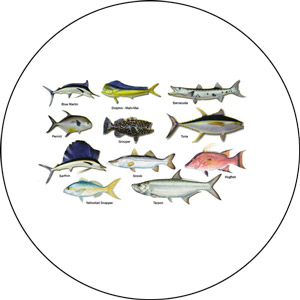
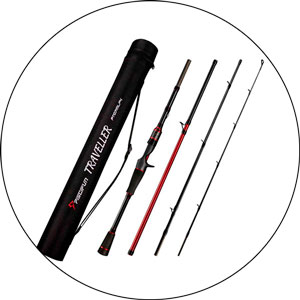
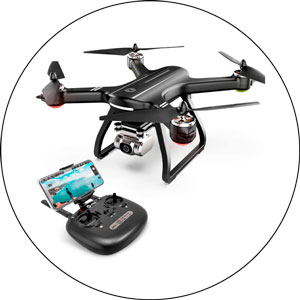
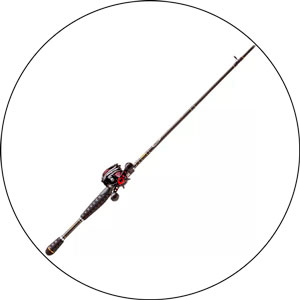
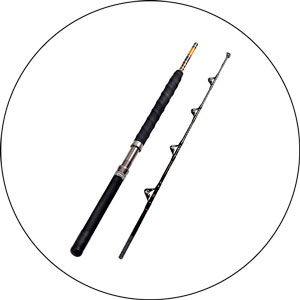
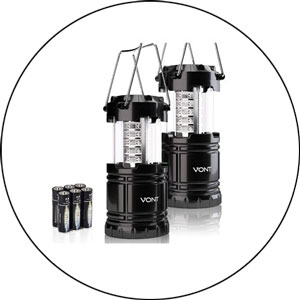
I liked the description and characteristics of the double hooks. The photo shows a fixture for fishing with live bait. It is the best I have ever used. Quick assembly and great catchability. Predatory fish grab the bait from the side of the head and get hooked right away. The hook that protrudes from the head of the live bait is almost invisible and does not scare the fish away.
Great article! As a beginner angler, I found the information on choosing the right fishing hook extremely helpful. The explanations for different hook types and their specific applications are clear and easy to understand. I appreciate the emphasis on responsible catch-and-release fishing and the inclusion of environmentally friendly hook options. This guide has given me the confidence to select the right hooks for my future fishing trips. Thanks for sharing!
I’ve been fishing for years, and this article is a fantastic resource for both beginners and seasoned anglers. The detailed breakdown of hook sizes, types, materials, and strengths helps anglers make informed decisions when selecting hooks. I especially liked the tips on matching hooks to bait or lure types and how water conditions affect hook choice. This comprehensive guide is an essential read for anyone looking to improve their fishing game.
This article is a must-read for anyone who wants to learn about choosing the right fishing hook. The well-organized FAQ format makes it easy to find specific information and allows for quick reference while out on the water. The sections on responsible catch-and-release practices and environmentally friendly hook options are important reminders for all anglers. Keep up the great work – I’ll be recommending this article to my fellow fishing enthusiasts
As an avid angler, I found this article to be a valuable resource. The clear and concise explanations of different hook types, sizes, and materials make it easy for anglers of all skill levels to choose the right hook for their specific needs. I particularly appreciated the attention given to responsible catch-and-release fishing and the tips for selecting hooks that are easy to remove, minimizing harm to the fish. Excellent job, and thank you for this informative guide!
Great points were made in this discussion! It’s crucial to understand that setting the hook varies depending on factors such as hook size, fish species, and size. For example, when using a circle hook, particularly an octopus circle hook, there’s often no need to set the hook manually – just reel it in and let the hook do the work. Setting a circle hook could actually be counterproductive.
Likewise, when targeting smaller species with delicate mouths like bluegill and crappie, it’s best to use smaller, sharper hooks and apply a gentle tug. Pulling too hard could seriously harm these fish.
Conversely, when topwater fishing with large hooks, such as those on frogs, a powerful hookset is necessary due to the heavy, thick wire and the need to penetrate the fish’s upper jaw, which is harder and tougher.
The same principle applies to heavy-wire swim jigs, although the hookset might not need to be quite as forceful. As for light wire jig heads, you’ll want to strike a balance between setting the hook firmly without bending the hook or allowing the fish to shake it loose.
Ultimately, learning to set the hook properly comes with experience. For beginners, a good rule of thumb is to pull harder on big, thick hooks and more gently on smaller, lighter hooks. With practice, you’ll get the hang of it soon enough.
Interesting approach to hook set! It’s great to hear how different anglers have their own techniques. In your case, instead of setting the hook traditionally, you reel in the line and lower the rod tip towards the fish. By doing this, you give yourself a couple of seconds to gently pull back on the rod while maintaining tension on the line. This approach seems to work well for you, especially as bass tend to shake their heads and might spit the lure.
It’s commendable that you avoid jacking the hook in the fish’s mouth out of concern for the fish’s welfare. Your technique of gently pulling to the side and allowing the bass to hook themselves can be quite effective. Additionally, using offset shank round bend hooks with your worm presentations has reportedly improved the hookset ratio without the need for a traditional hook set.
It’s always fascinating to learn from different anglers and their unique methods. Thanks for sharing your experience and insights!
Great advice on using circle hooks when fishing with bait! They can indeed help with hooking the fish as they take the bait and swim away. As you mentioned, simply reeling in the line with a circle hook often sets the hook effectively.
It’s true that knowing where the fish is getting hooked can be difficult to predict. However, as you pointed out, circle hooks typically hook the fish in the corner of the mouth. The most crucial factor when reeling in a fish is maintaining a tight line, and setting the hook by pulling up and back, depending on the rod position.
Experience plays a significant role in knowing when to set the hook, and it’s important to remember that missing hookups is part of the learning process. If a fish bites and gets away, don’t give up – the fish might still be interested and give you another chance.
As for soft plastics and spoons, the hook setting depends on the retrieval technique. With soft plastics in the flats without a cork, a quick hook set might be appropriate, while with spoons, hook sets often happen after the flutter during the reeling process.
Keep practicing, and you’ll get a better feel for the right hook-setting techniques for different scenarios.
It’s interesting to hear about your preferred hook size and setup! A size 12 bait holder seems to work well for you, especially when fishing with worms or mealworms and using a bobber. Waiting for the bobber to be fully pulled under the water before setting the hook appears to be quite effective in hooking fish in the mouth.
For those using a bottom fishing rig, possibly with power bait, the advice to be as attentive as possible is crucial. Once you feel a strong pull on the line, setting the hook and starting to reel in can make a significant difference in your success.
Thanks for sharing your experience and tips – they’ll surely help other anglers improve their techniques!
Excellent points on setting the hook and keeping fish under pressure! As you mentioned, it’s important to adapt the hook set to the specific fish – softer mouths require a gentler hook set, while harder mouths might need a more forceful approach.
Keeping a steady bend in the rod ensures the hook doesn’t come loose and maintains constant pressure on the fish. Your advice for beginners to reel steadily and keep the rod tip higher is very helpful.
When it comes to drag, tightening it while reeling in a bigger fish is essential to avoid line twists and maintain line retrieval. Additionally, checking the sharpness of hooks is crucial, as dull hooks can compromise the hook set.
The rig itself could be another potential issue. Ensuring there’s enough room between the hook shank and point and considering the type of hooks being used, like EWG or offset hooks, is important to maximize hook-up rates.
Once potential problems are identified and corrected, maintaining tension on the line and setting the drag appropriately will help improve overall success when hooking and reeling in fish. Thanks for sharing these valuable insights and tips with fellow anglers!
It’s fascinating to see the wide variety of hooks available for different fishing situations! Your quick list of 21 types of hooks is certainly impressive, and it highlights the complexity of choosing the right hook. Focusing on freshwater lake fishing from a boat, some common hooks include bait hooks, wide gap/extra wide gap hooks, worm hooks, circle/octopus hooks, and treble hooks. Keep in mind that there are many subtypes and variations within these categories as well.
Hook sizes can be confusing due to the lack of a standardized measurement system. Generally, hooks are measured in “sizes” and “aughts.” “Sizes” range from Size 1 (the largest) to Size 30 (the smallest), while “aughts” start from 1/0 (slightly larger than Size 1) and increase in size as the number gets higher.
Barbed hooks offer better fish retention but can cause more damage to the fish, which is why some fisheries prohibit their use. On the other hand, barbless hooks are less harmful to the fish but might result in more lost catches.
Selecting the right hook size depends on the fish’s mouth size, with smaller hooks being appropriate for fish like bluegill and larger hooks for species like catfish. Additionally, the “wire weight” of the hook is another important factor. Thin wire hooks set easier but can bend under heavy loads, while heavy wire hooks are strong but harder to set in the fish’s mouth.
Ultimately, finding the right balance between hook size and wire weight comes down to practice and experience. Thanks for sharing this informative and comprehensive overview of fishing hooks!